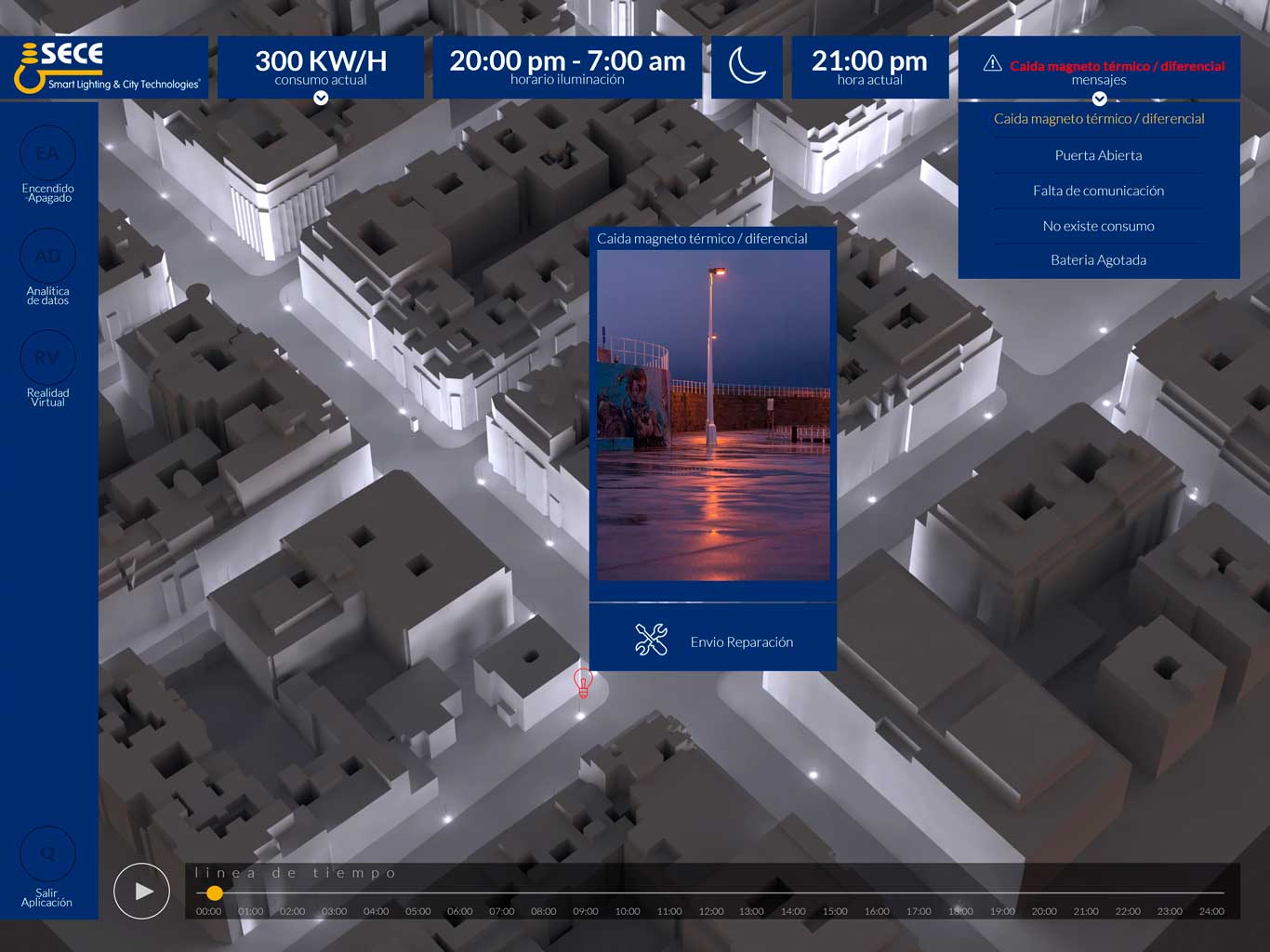SECE is a company focused on urban lighting, electric mobility and Energy Management. The company contacted Pixeldreams to request the development of a 3D digital twin (interactive 3D replica) that would allow the management team to effectively explain its public lighting management model during the fair: Smart City Congress that took place in Barcelona last year November 16 to 18.
SECE is focused on the deployment of remote management and IoT sensor technologies using outdoor lighting infrastructures as a basis, with the objective of improving the efficiency of the facilities as well as the protection of the night environment. It has the first remote sensor and lighting assistant in the sector with which it manages more than 450,000 light points.


The Twin Digital application developed by Pixeldreams had to show the remote management of the update and maintenance operations, reducing to a minimum the presence of specialized personnel at the installation stage, surpassing the conventional remote control systems, allowing connectivity with the mentioned IoT devices . It simulates the monitoring and analysis of data from IoT luminaires with integrated sensors, obtaining important conclusions about the quality and continuity of the data, the connectivity needs as well as the periodic maintenance tasks required for each type of device.

A digital twin (or digital twin) is a digital representation of a physical object, process or service: from a These virtual replicas are used to perform simulations before changes are created and implemented in real objects, in order to collect data to predict how they will work. On many occasions, physical objects are equipped with many sensors responsible for collecting data on their status in real time, working conditions or their position. All these data must be analyzed and processed to recreate the digital model.
Benefits: Prototyping: digital twins allow reducing product defects, improving planning and delivery. They allow to evaluate the life cycle of a product:

